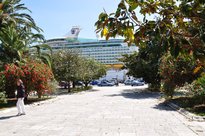 |
The Municipal building sits right on the port. In 1943, the German Army embarked from these piers, today a magnificent cruise ship brings an
army of American tourists to the city. It was nice to run into dozens of people who spoke my language. |
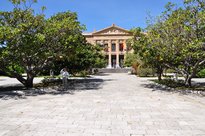 |
As we stand where Patton reviewed his 7th Army, we contemplate how the war would have gone had those slapping incidents never happened. Would Patton have been
given command of Operation Overlord or would he have had Mark Clark's command in Italy? How would the Italian Campaign have progressed if he were in command? These points will
be debated by historians for as long as World War II remains in human memory. |
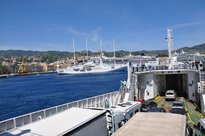 |
On 17 August 1943 the last German troops boarded transports to Calabria. On 29 April 2013, we followed their route of evacuaction to Reggio Calabria and
"invaded" the Italian penninsula. |
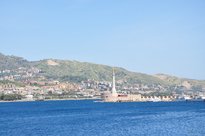 |
As in all of northern Sicily, the mountains in the Messina area fall directly to the sea. The city itself is elongated, built along the side of the
mountains. |
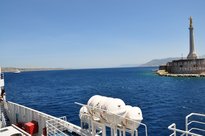 |
I am amazed at how close the tip of Sicily is to the Italian mainland. Just two miles at its narrowest point. In this photo, off in the distance you can see the towers
of an abandoned catenary that brought electrical power to Sicily. |
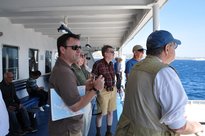 |
Tony finished his informative lecture on the last days of the Sicilian campaign and our attention turned our upcoming visit to the battlefields of mainland
Italy. Bad as Sicily was, the battlefields yet to be toured were the sites of untold carnage. Their soil would be stained by the blood of thousands of Allied soldiers, including
my cousin Sidney I. Heistein. |